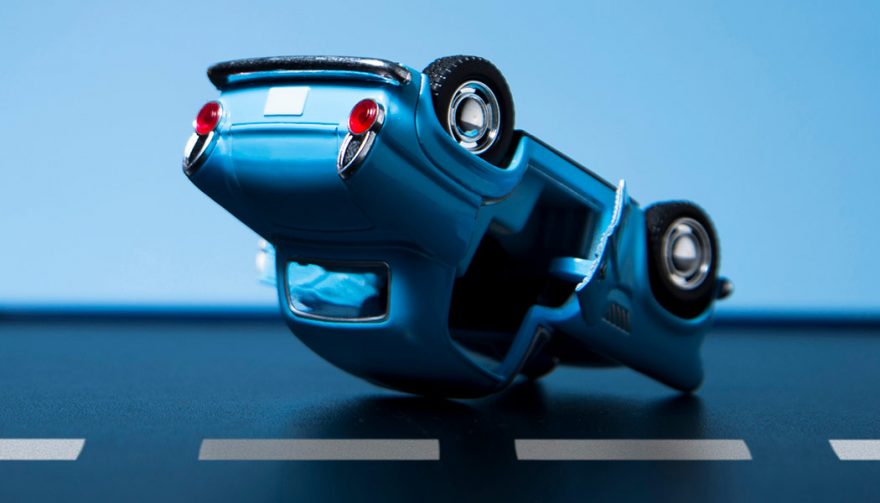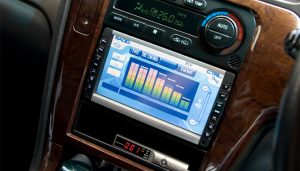
The easiest way to get out of an upside down car loan is to keep the car until the loan is paid off
How to Get Out of an Upside Down Car Loan: You Have a Few Options
Remember when you bought that brand new 2014 BMW 535i for about the same price as a three bedroom ranch in rural Kansas? That 60-month car loan squeezed out the high price to manageable chunks and life was good. But now you’re wondering how to get out of an upside down car loan.
Unlike the house in the middle of Kansas which has appreciated about 4 percent in the past three years, your BMW 5 Series has tanked in value and you now owe more than the car is worth. Who knew a BMW would be one of the fastest depreciating mid-size luxury sedans?
It’s been three years and you’d like to get a new ride, but you need to know how to get out of an upside down car loan. What do you do? Is there an easy solution?
How to Get Out of an Upside Down Car Loan
Unfortunately, there isn’t an easy solution. One way or another, you are going to have to pay that upside down balance on your loan. However, there are some options that may be better than others to put you in a position to get rid of the car.
Calculate Negative Equity
Let’s start at the beginning. You need to calculate your negative equity. Negative equity is simply the current value of your car minus the current balance of your loan. The trick of course is determining the “fair value.”
To get a good idea, go to KBB.com and Edmunds.com and get both the “trade in value” and “private party sale value.” Between these two sources, which are based on your local market, options and condition, you should have a pretty good idea of what your car is worth.
If your car is worth $20,000 and the principal balance on your loan is $23,500, your negative equity is $3,500.
The Easiest Solution
Keep the car. At some point you will pay off the loan and even if the value of your car has dropped a thousand or two, you will have eliminated the negative equity. Now you have something of value to use as a trade.
If you don’t rack up a lot of miles each year, this is probably the smartest way out to get out of an upside down car loan. The rate of depreciation will tail off after three years, meaning each month’s car payment is taking a bigger chunk out of the negative balance. You could reach “break even” before the end of the loan term.
The Cash Solution
Accept the fact that one way or another if you don’t hang on to the ride until its paid off, you’re going to have to pay that negative balance. Of course, the easiest way to get rid of the negative equity is to simply pay it off. Not everyone is in a financial position to do that.
Try to Refinance Your Loan
If you can’t pay cash, you can try to refinance your loan at a lower rate. With a lower rate you can take a bigger bite out of the principal without increasing the payment you are making today.
Unfortunately, refinancing car loans is not a market where major automotive lenders (GMAC, FMCC) are interested. If you have a relationship with a local bank or credit union you may have a better shot at pursuing this option.
When refinancing is not an option, call your current lender and explain your situation. If you can afford it, ask them if you can increase your monthly payment with no penalty. By increasing your monthly payment, you have a shot at winning the devaluation race. You may be in a break-even situation before the loan is completely paid off. In essence, this is a variation on the lump sum payout just spread over time.
Roll the Negative Balance
If you just have to have a new car today and you don’t mind kicking your negative equity down the road, you can use your vehicle as a trade on a new ride and have that negative balance rolled into your new car loan. This tactic has its pluses and minuses, but mostly minuses.
For starters you will likely get less for your car as a trade than if you sold it yourself. Review those “trade” estimates to see what your new “negative equity” will be.
On the plus side, if your new loan has a significantly lower interest rate, you might be saving a couple of bucks. That might be true if your new loan is a 30-month deal and not a 60-month contract. The longer loan will have you paying a lower rate but over a much longer time than a refinanced deal.
Then you need to watch out for how the dealer handles the sale price of your new car. If they jack up the amount of the trade to cover the negative balance, you can expect them to up the price on your new car by the same amount. That’s a problem.
For starters, you will pay sales tax on the negative equity that rolled into the price of your new vehicle. A bigger problem is you’ll be driving off the lot in a car that already has an upside down loan. Of course everyone has an upside down car loan the moment they take possession. Yours will be further underwater by the amount of negative equity from your previous car.
Try Selling the Car Yourself
Generally speaking, the best way to quickly minimize your negative equity on a car loan is to sell the car yourself. Typically, you will get more than a dealer will offer in trade. If haggling with strangers and looky-loos is not your bag, you may want to avoid this option.
There is another practical challenge that has to be dealt with as well. You’ve got to be able to present the buyer with the pink slip. This means you have to pay off the balance on your car today. If you have a bank that will agree, have both you and the seller meet at the bank to conduct the sale. Of course, you have to be prepared to pay the balance at that time.





